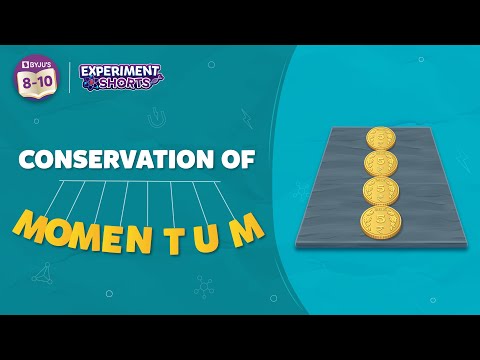We have seen quantities like velocity, acceleration, mass, etc. and know what they signify. Now we will define a quantity known as momentum, which is mathematically represented as:
P = mv
| Table of Contents |
Linear Momentum
It is the amount of motion a body possesses. As it is a product of mass and velocity, like velocity, it is also a vector quantity. Its unit is Kg m s-1. Now we will relate the kinetic energy with its linear momentum.
P = mv
Squaring both sides and dividing by 2 we get,
So if two bodies having different masses have the same kinetic energy, then the one with lighter mass has smaller momentum.
Read More: Kinetic Energy
Linear Momentum Formula and Unit
| Linear momentum formula for a particle | P=mv |
| Linear momentum formula for ‘n’ no.of particles | P=p1+p2+….+pn |
| Unit of linear momentum | kg.m.s-1 |
How to Calculate the Rate of Change of Momentum?
Newton’s Second law relates force with the rate of change of momentum. According to the law, force is directly proportional to the rate of change in momentum. 
We will use this to state the law of conservation of momentum. According to this, if the net force acting on the system is zero, then the system’s momentum remains conserved. In other words, the change in momentum of the system is zero. According to the second law, we can see as F = 0, so it will also be zero. Let’s take the following example:
We consider m1 and m2 as our system. So during the collision, the net force on the system is zero, and hence we can conserve the system’s momentum. The equation for momentum will be:
Initial momentum = m1u1 + m2u2
Final momentum = m1v1 + m2v2
So, according to the conservation of momentum,
m1u1 + m2u2 = m1v1 + m2v2
But one thing to take care is that conservation is only true for a system and not one body because if we consider only a single body m1 or m2, then the net force will be acting on it, so we cannot write m1u1 ≠ m1v1 or m2u2 ≠ m2v2.
Frequently Asked Questions – FAQs
Discuss the law of conservation of momentum. State its unit.
The unit of momentum in the S.I system is kgm/s or simply Newton Second(Ns).
How does Newton’s second law of motion apply to rockets?
How does Newton’s second law apply to a car crash?
What is the other name for Newton’s second law?
What are some daily life examples of Newton’s second law of motion?
Newton’s second law of motion explains how force can change the acceleration of the object and how the acceleration and mass of the same object are related. Therefore, in daily life, if there is any change in the object’s acceleration due to the applied force, they are examples of Newton’s second law.
- Acceleration of the rocket is due to the force applied known as thrust and is an example of Newton’s second law of motion.
- Another example of Newton’s second law is when an object falls from a certain height, the acceleration increases because of the gravitational force.
Watch the demonstration of the conservation of energy and momentum using coins

To learn more about the conservation of momentum and its practical application, download BYJU’S – The Learning App. Stay tuned with BYJU’S for more interesting articles, loads of interactive, engaging Physics-related videos and unlimited academic assistance.

Comments